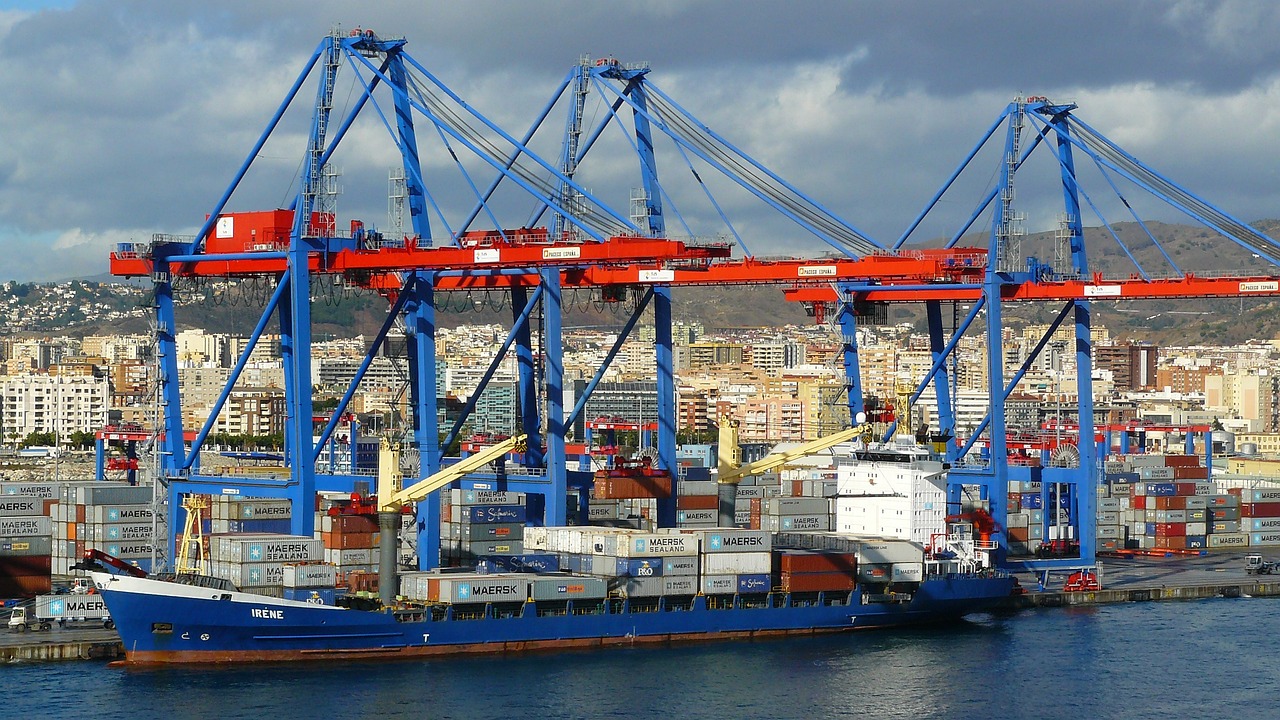
Your Ultimate Guide for 2024 Shipping to Ethiopia
Shipping to Ethiopia presents an opportunity to engage with a growing sector that plays a role, in the country’s economic advancement. As one of the expanding economies in Africa, Ethiopia features a trade industry that heavily relies on effective shipping operations to link up with global markets.
Ethiopia’s strategic position in the Horn of Africa positions it as a hub for transportation providing access to international shipping routes and maritime trade connections. The country’s diverse landscape, which includes highlands, plateaus and lowlands poses both challenges and prospects for the shipping sector necessitating solutions to tackle hurdles and ensure seamless movement of goods and cargo.
International Shipping to Ethiopia in East Africa
The Port of Djibouti acts as Ethiopia’s entry point for trade activities handling a significant portion of the nation’s imports and exports. Located across Ethiopia’s border Djibouti boasts port facilities and efficient logistics infrastructure that ease the transportation of goods to and from landlocked Ethiopia offering crucial links, to global markets.
Alongside transport Ethiopia’s shipping sector encompasses a network of inland logistics systems comprising roadways, railways and air transport options. The nation’s growing network of roads, along with infrastructure initiatives, like the Addis Ababa Djibouti Railway improves the flow and ease of transporting goods throughout the country.
What makes Ethiopia a great shipping hub in East Africa:
Ethiopia serves as an exceptional center for shipping goods, providing a wide range of advantages that cater to the diverse needs of shippers worldwide. Here are several reasons why Ethiopia stands out as a prime destination for shipping:
1. Strategic location:
Situated in the Horn of Africa, Ethiopia boasts a strategic geographical position that offers convenient access to various international markets. Its close proximity to key shipping routes and major ports in the Red Sea and Indian Ocean enables efficient trade connections with Europe, Asia, the Middle East, and beyond.
2. Extensive transportation infrastructure:
Ethiopia has made significant investments in developing its transportation infrastructure, including roads, railways, and airports. The country’s modern road network and railway systems streamline the movement of shipping to Ethiopia and enhances connectivity with neighboring countries, ensuring seamless logistics for shippers.
3. Thriving economy:
With one of the fastest-growing economies in Africa, Ethiopia provides a vibrant and dynamic market for businesses seeking growth opportunities. The country’s expanding consumer base and rising middle class offer lucrative prospects for exporters looking to tap into Ethiopia’s increasing demand for goods and services.
4. Trade agreements and partnerships:
Ethiopia has forged advantageous trade pacts and alliances with multiple nations and regional groups, streamlining commercial activities and diminishing obstacles for traders. These accords bolster Ethiopia’s attractiveness as a trading center and open up avenues for heightened trade levels.
5. Simplified customs procedures:
Ethiopia has implemented reforms to streamline customs procedures and improve trade facilitation. The introduction of electronic customs systems and simplified documentation requirements has reduced administrative burdens and expedited the clearance process for imported and exported goods, making shipping to and from Ethiopia more efficient.
6. Shipping cost that are competitive:
Ethiopia offers shippers competitive transportation solutions with cost-effective shipping rates and expenses, making it an attractive choice. Shippers can benefit from affordable options such as air freight, sea freight, or land transport, effectively reducing their logistics costs.
Customs, Imports, and Exports Regulations when Shipping to Ethiopia

In recent years, Ethiopia has significantly altered its customs procedures in an effort to facilitate trade and improve the efficiency of import and export operations. The Ethiopian Customs Commission is responsible for overseeing customs operations, ensuring that regulations are followed, and goods are cleared efficiently.
Importers and exporters now enjoy simplified documentation requirements and electronic customs clearance systems, which help reduce administrative burdens and speed up customs procedures.
Documentations required while importing to Ethiopia
- Agency agreement!
- Value added tax (VAT) Certificate!
- A bank permits!
- Transit document!
- Pre-shipment inspection clean report of findings!
- The certificate for Tax identification number (TIN) certificate!
- A bill of lading or airway bill!
- Your packing list!
- Certificate of origin!
- Certificate for insurance!
- Your license for importing!
- Commercial invoices!
- Foreign exchange authorization!
- Customs import declaration!
What you can import and export in and from Ethiopia
A vast range of:
- Industries, including equipment, textiles, manufacturing, and agriculture, are among Ethiopia’s imports and exports.
- Coffee, oilseeds, textiles, and flowers are the nation’s top exports.
- Consumer goods, machinery, cars, and electronics are its top imports.
Ethiopia presents profitable chances for companies wishing to use shipping to increase their worldwide reach, since the country’s economy is expanding, and its international trade partnerships are rising.
Timelines for Express and Standard Shipping to Ethiopia

When shipping to Ethiopia you can expect a range of shipping schedules that suit your diverse needs and financial constraints. Express and regular shipping options are offered for the shipment of heavy equipment, automobiles, household products, and containers.
Express shipping to Ethiopia:
When delivering critical items or items that must be delivered quickly, express shipping is the preferred option. Because at Ameritrans Freight International, our expedited service guarantees quick transit times, it’s perfect for meeting deadlines. Express air freight shipping services provide timely delivery to Ethiopia in a few days, providing a dependable option for urgent items.
Furthermore, courier services offer accelerated shipping choices for smaller packages, guaranteeing prompt delivery in as little as two to five days, contingent upon the courier service provider. For shippers who need timely delivery of their goods, this quick turnaround time offers peace of mind. For smaller packages, courier services can provide accelerated shipping choices. Depending on the courier service, delivery durations might range from 2 to 5 days.
Timelines for express shipping to and from Ethiopia to other continents
- Ethiopia to Europe express shipping: Air freight delivery in 3–5 business days. Depending on the provider, courier services can provide shipment in a span of two to four days.
- Express air freight delivery from Ethiopia to North America (USA and Canada) takes 4–6 business days. Contingent on the service provider, courier services may deliver goods in three to five days.
- Express air freight delivery from Ethiopia to Asia (China, India, Japan): 3–6 business days for delivery. Depending on the operator, courier services can provide delivery in a timeframe of two to five days.
- Ethiopia to the Middle East (UAE, Saudi Arabia, Qatar) via express shipping: Arrival by air freight in 2–4 business days.
With respect to the operator, courier services can deliver goods in one to three days. - Express shipping to Kenya, South Africa, and Nigeria from Ethiopia: Arrival by air freight in 2 to 5 business days.
Depending on the service provider, courier services may deliver goods in one to four days.
Standard shipping to Ethiopia:
Standard shipping methods, such as sea freight and regular air freight, offer economical alternatives for shipping to Ethiopia. While not as swift as express services, standard shipping provides a cost-effective solution for transporting goods. Sea freight shipments to Ethiopia from major ports worldwide typically require a transit period of 4 to 6 weeks, depending on the origin and chosen shipping route.
Similarly, standard air freight shipments may take approximately 7 to 10 days for delivery to Ethiopia. Despite the longer transit times compared to express options, standard shipping offers a budget-friendly alternative for shippers seeking cost-effective transportation solutions.
Timelines for standard shipping to and from Ethiopia to other continents
Sea Freight shipping from Ethiopia:
- The shipping period from Ethiopia to European countries is roughly 4 to 6 weeks for standard shipping.
- The time frame for standard shipping from Ethiopia to North America (USA and Canada) is normally 6 to 8 weeks.
- The estimated transportation time for shipping cargo from Ethiopia to Asia (China, India, Japan) is between 5 and 7 weeks.
- Delivery time for standard shipping from Ethiopia to the Middle East (Qatar, Saudi Arabia, UAE) is anywhere from 3 to 5 weeks.
- A period of 4 and 6 weeks can pass for standard shipping from Ethiopia to Africa (Kenya, South Africa, Nigeria).

Air Freight shipping from Ethiopia
- The transit time for standard shipping through air freight from Ethiopia to Europe is roughly 7 to 10 days.
- Standard shipping from Ethiopia to North America (USA and Canada) usually takes 8 to 12 days.
- A 7-to-11-day transit time is estimated for shipping from Ethiopia to Asia (China, India, Japan).
- Arrival is in approximately 5 to 8 days for shipping from Ethiopia to the Middle East (UAE, Saudi Arabia, Qatar).
- Ethiopia to Africa (South Africa, Nigeria, Kenya) for standard shipping takes 6 to 9 days.
Container and RORO Shipping
Container shipping
- Type of containers: Different sorts of containers can be transported, such as dry products, machinery, and equipment. Standard container sizes include 20-foot and 40-foot containers.
- Ports of loading: Major ports across the world, such as those in Asia, Europe, and North America, are usually the destinations of goods bound for container shipment to Ethiopia.
- Transit time: This depends on the origin port, shipping route, and shipping mode, there are differences in the transit times for shipping containers to Ethiopia. Sea freight shipment to Ethiopia typically takes four to six weeks from major ports.
- Port of discharge: The Port of Djibouti in Djibouti is the principal port of entry for marine freight exports to Ethiopia, and this is where containers bound for Ethiopia are normally discharged.
- Cost of container shipping: The estimated cost varies on a number of variables, including: –
- The size of the container!
- The shipping routes!
- The freight charges!
- Any extra services needed!
Depending on the origin port and shipping mode, shippers should budget between $1,500 and $6,000 for a conventional 20-foot container (FCL) and $2,500 to $10,000 for a 40-foot container (FCL). Insurance, terminal handling, and customs clearance may all need additional costs.
RORO shipping
- Motor types: Vehicles that can be driven on and off the vessel, such as cars, trucks, buses, and heavy machinery, are the main items transported by roll-on/roll (RORO) transportation.
- Ports of loading: Cars bound for Ethiopia via RoRo are normally loaded at ports in Europe, Asia, and the Middle East that have RoRo infrastructure.
- Transit time: RoRo exports to Ethiopia typically take 2 to 4 weeks from major ports.
- Port of discharge: RoRo ships that bring cars to Ethiopia usually arrive at the Port of Djibouti, where the cars are cleared by customs and then driven to Ethiopia.
- Customs clearance: For all car shipping to Ethiopia, they need to have proper documentation and clearance before it is released for further transit at the Port of Djibouti.
- Cost of RORO shipping: Various factors affect the cost of car shipping through roro, including: –
- Car type!
- The shipping route it uses!
- Freight rates!
- Additional services needed!
Depending on the origin port and transportation method, shippers should budget between $800 and $3,000 for standard-sized cars, such as cars and trucks, and $3,000 to $10,000 for big or heavy gear. For insurance, car review, and customs clearance, there can be additional costs.
Maritime Routes for Sea Freight Shipping
For international trade, Ethiopia mostly uses shipping routes and large ports, which are used for the transfer of sea freight. Several important shipping lanes are utilized to deliver goods to Ethiopia, including:
- The Red Sea Route: This route provides easy access to ports like Djibouti, Sudan’s Port Sudan, and Jeddah and connects Ethiopia to important ports in the Middle East and Asia.
- The Suez Canal Route: By cutting down on transit times and fuel expenses, the Suez Canal offers a vital detour for ships sailing between Europe and Asia, with implications for shipping to Ethiopia.
- The Indian Ocean Route: In order to reach ports in Ethiopia, ships sailing from Asia, Europe, and other continents frequently traverse across the Indian Ocean. These ports include Mombasa, Kenya; Dar es Salaam, Tanzania; and Mogadishu, Somalia.
Major discharging ports for Ethiopia’s sea freight shipping
Ethiopia lacks direct access to the sea due to its landlocked status. For maritime freight shipping, it is dependent on the ports of its bordering nations. Several prominent ports are frequently utilized for maritime freight transportation to and from Ethiopia.
Port of Djibouti
Ethiopia’s main maritime freight shipping entry point is the Port of Djibouti (Djibouti), which is located on the Gulf of Aden. Its advantageous location close to Ethiopia’s border allows it to be easily accessed by road and train from Addis Ababa, the country’s capital. Most of Ethiopia’s imports and exports are handled by the Port of Djibouti, which makes it an essential conduit for the nation’s trading activity.
Port of Berbera in Somaliland
The Port of Berbera, situated in Somaliland, serves as a crucial gateway for maritime cargo shipments to Ethiopia. It offers an alternate route for the transportation of commodities to and from Ethiopia by giving entry to the Ethiopian market using the pipeline and road links.
Port of Mombasa in Kenya
Although it is not situated next to Ethiopia, the Port of Mombasa is a major transit point for maritime cargo bound for Ethiopia. Imports of products can be shipped by road or rail from Mombasa to Ethiopia, opening up another channel for maritime freight trade.
Port of Massawa in Eritrea
Ethiopia has historically had restricted accessibility to Eritrea’s Port of Massawa due to political issues. However, current diplomatic moves have created new opportunities for maritime freight shipping between the two nations. Ethiopia may be able to diversify its maritime freight routes and lessen its reliance on other ports by using the Port of Massawa.
Ethiopia’s use of the Port of Lamu for shipping

Ethiopia, a landlocked nation in the Horn of Africa, is displaying a strong desire to use Kenya’s Port of Lamu as part of a strategic initiative to improve its access to maritime trade routes. Ethiopia has made great progress with this development, which presents chances for further commerce and economic prosperity.
Why does Port Lamu exist?
East African landlocked nations, like Ethiopia, have a great deal of potential as a gateway to international markets through the Port of Lamu, which is situated along the coast of Kenya. Lamu Port offers faster transit times and less reliance on crowded ports as an appealing alternative to traditional trade routes because to its strategic position and cutting-edge facilities.
Increasing connectivity:
Ethiopia is committed to increasing connectivity and broadening its trade channels, as seen by its keenness in using the Port of Lamu. Ethiopia hopes to bolster its status as a regional commercial hub and increase its access to global markets by utilizing Lamu Port’s state-of-the-art facilities and effective logistical infrastructure.
Advantages for adjacent nations:
Ethiopia’s participation in the Port of Lamu goes beyond its boundaries, conferring advantages to surrounding nations in the East African area. Ethiopia, a significant landlocked country, uses Lamu Port to its advantage, creating new commercial channels and easier access to international markets for South Sudan, Uganda, and Rwanda, among other nations.
Trade growth and expansion:
The Port of Lamu provides an access point to the Indian Ocean, linking landlocked nations to global shipping ports and maritime trade routes. Ethiopia can broaden its export markets, draw in foreign investment, and promote growth in its economy across a range of industries by utilizing Lamu’s strategic assets.
Infrastructure development:
Ethiopia’s commitment to Lamu Port is in line with larger plans to fund projects that will facilitate trade and expand infrastructure. The port’s continuous growth initiatives, which include building docks, ports, and transportation networks, show a shared dedication to enhancing regional connections and promoting economic integration.
Collaborative partnerships:
Ethiopia’s involvement with the Port of Lamu serves as a reminder of how crucial international engagement and collaborative partnerships are to promoting sustainable development and increased trade. Ethiopia seeks to achieve mutual development by collaborating cooperatively with Kenya and other East African countries to take advantage of opportunities and address shared obstacles.
Frequently asked questions for shipping to Ethiopia
What are the common items prohibited for import into Ethiopia?
Products that are frequently forbidden from being imported into Ethiopia include drugs, weapons, counterfeit money, pornographic materials, and dangerous chemicals.
How can I track my shipment to Ethiopia effectively?
The tracking number that your shipping carrier gives you will allow you to follow your package to Ethiopia efficiently. To get real-time information on the location and status of your package, simply type in the tracking number on the website of the shipping company or mobile app.
Are there any specific packaging guidelines to follow when shipping to Ethiopia?
It is advised to use strong, long-lasting packaging materials while exporting to Ethiopia in order to guarantee the security of your cargo. To ensure a seamless customs clearance process, shipments must also be appropriately labeled with precise and readable information, such as sender and destination details.
What are the usual customs clearance timelines for shipments entering Ethiopia?
Timelines for customs clearance of imports into Ethiopia are contingent upon a number of variables, including shipment volume, cargo kind, and customs processing protocols. Generally speaking, depending on the intricacy of the documentation and inspection procedures, customs clearance for air freight shipments can take one to three days, while sea freight shipments may require up to seven days.
